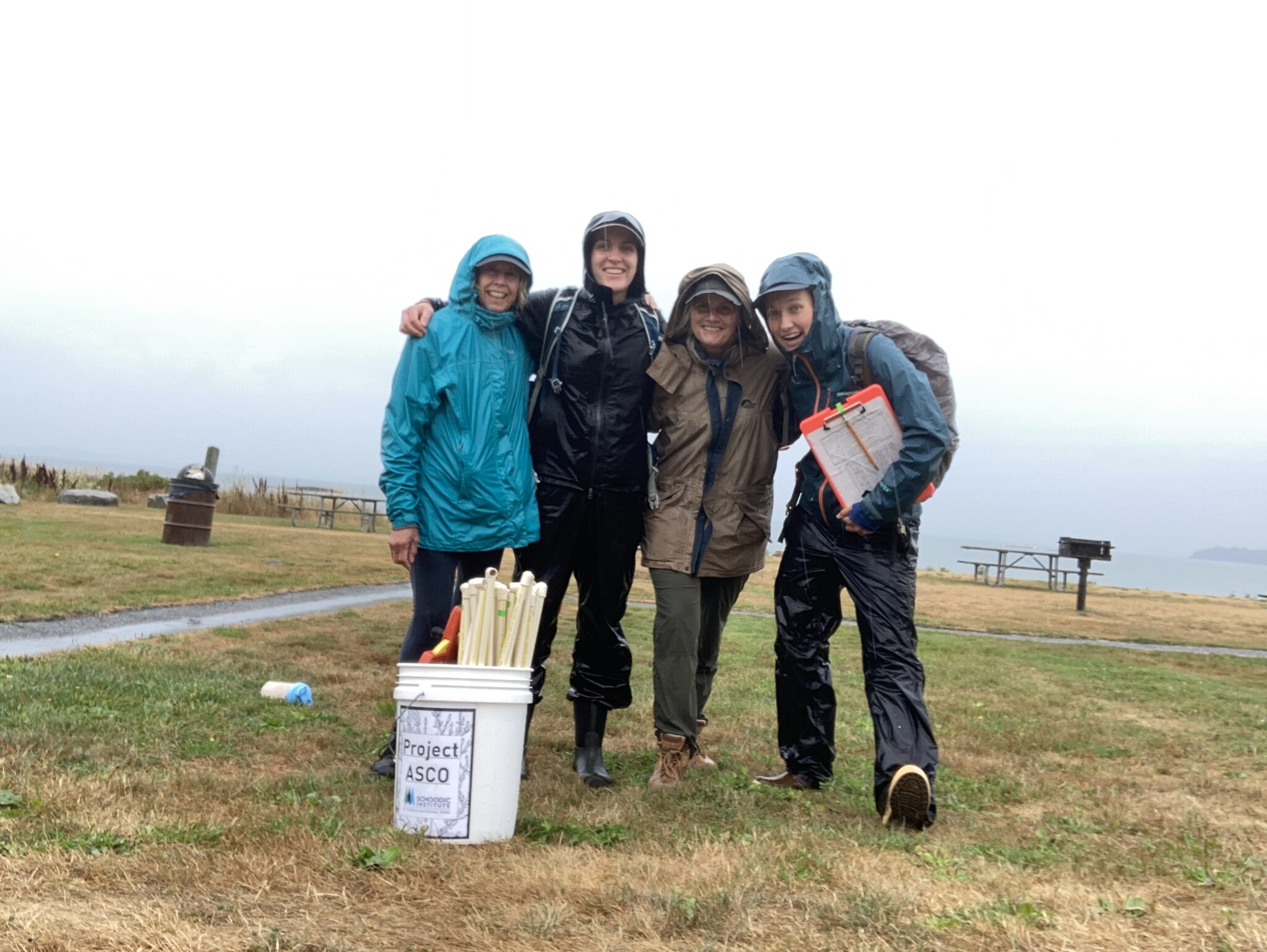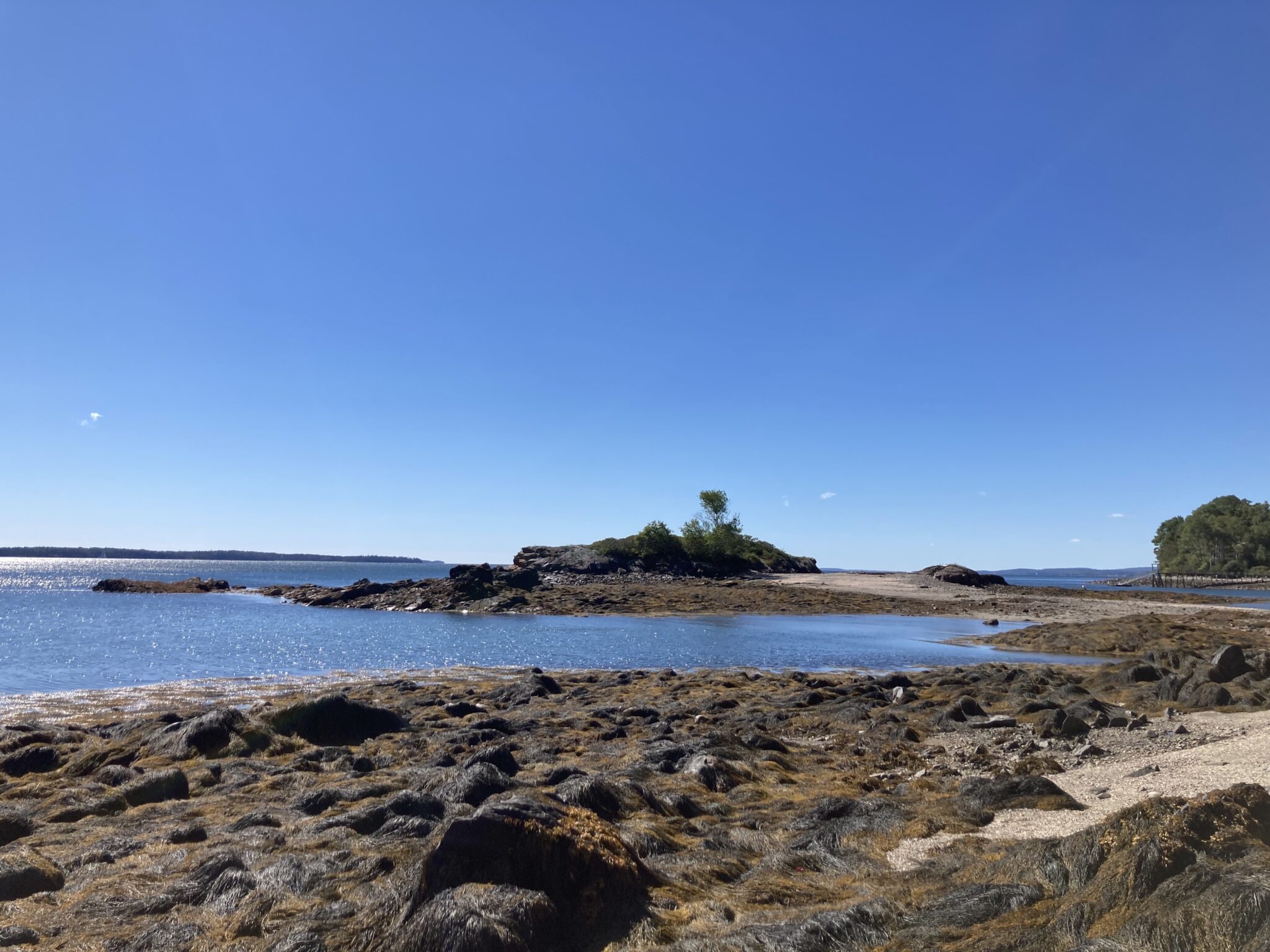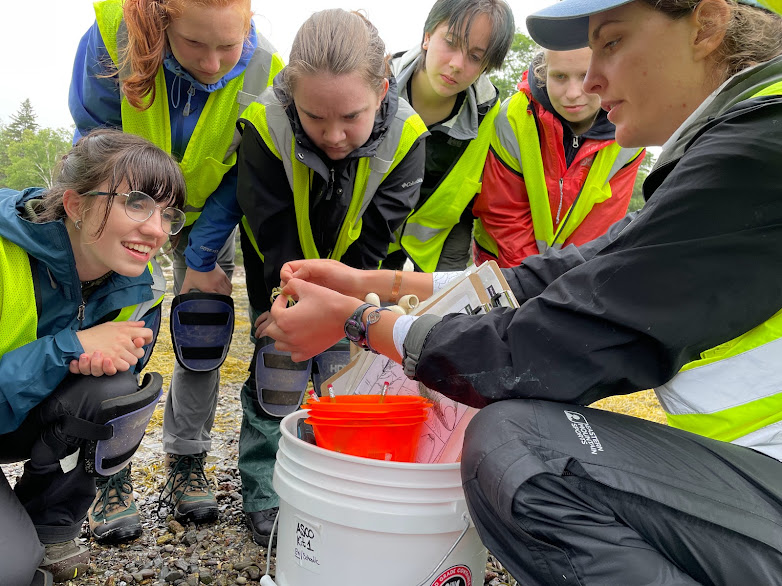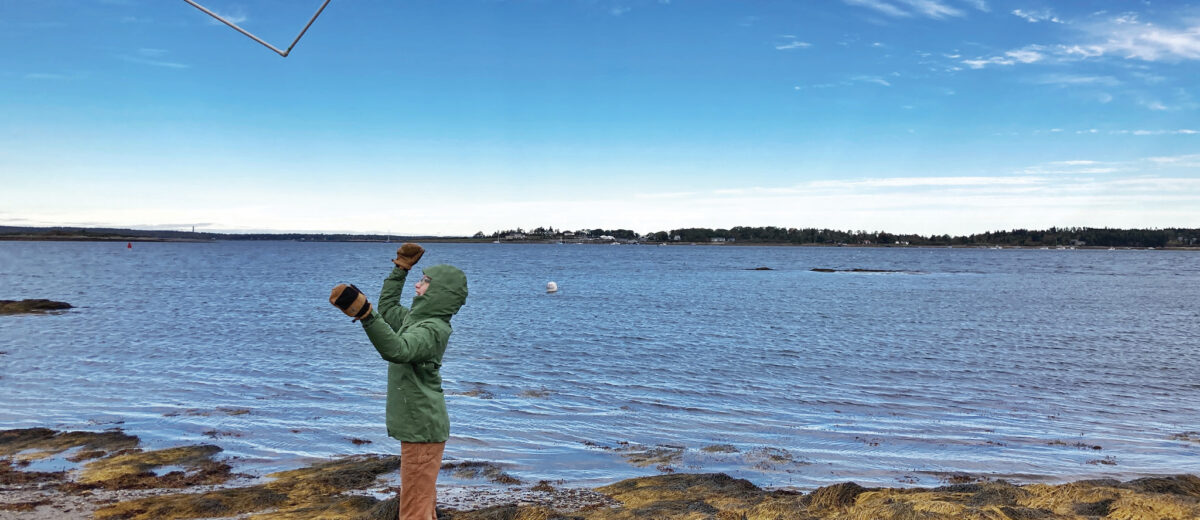by Maya Pelletier
This is a story about Maine’s rocky intertidal ecosystem. An ecosystem is a complex network of living and nonliving elements that interact with each other and fulfill specific roles within their environment. For an ecosystem to maintain itself, critical functions like nutrient production, habitat creation, and waste processing must be filled. In Maine’s rocky intertidal zone, the seaweed Ascophyllum nodosum – also called Asco or rockweed – is a foundational organism that provides habitat for many creatures. It also inspires curiosity.
This desire to uncover inner workings of the physical world leads to the development of research questions that form the basis of scientific research. This key aspect of the scientific process– the systematic asking of questions and searching for answers– builds our understanding of ecosystems and how they change in response to human and non-human factors. Through Project ASCO (Assessing Seaweed via Community Observations), Schoodic Institute works with citizen science volunteers to address the question, How much rockweed is there on the Maine coast? The answer to this query is important to resource managers, harvesters, and conservationists because Asco is both a crucial species in the rocky intertidal ecosystem and a harvested resource. It is also a source of fascination to new and experienced volunteers who are key to our work.
~*~
Maya, do you know what seaweed this is? I found it yesterday while collecting data and want to know if we usually see it here.
I clicked on the photo attachment in the email I had just received from a citizen scientist and zoomed in on the greenish-brown tangle of fronds. It was Ascophyllum nodosum, I was pretty sure, but the volunteer was right– it looked quite different from the long, Van Gogh-like linguine we’re used to seeing in Maine’s rocky intertidal. Best to double check. I zipped the image to my colleague and started composing a response while I waited for confirmation.
Hi Ann, Great to hear you’ve been out collecting data– thanks so much for contributing to this project! That seaweed is actually Asco, it just has a different morphology from what we’re used to seeing. That piece looks like it might come from a place with a lot of ice scouring. Nature is amazing, right!? Looking forward to getting in the field with you soon!
Just as I finished typing my phone dinged, confirming my identification. It was Ascophyllum. I clicked ‘send,’ activating the invisible web of ones and zeros connecting me to the network of Project ASCO volunteers.

We’ve got a research question and we’ve begun to collect data to address it, but the scientific process doesn’t stop there. In addition to the researchers collecting data for Project ASCO, people interact with the rocky intertidal as curious coastal property owners, rockweed harvesters out to make a living, and concerned conservation groups. Questions and ideas about how to research this ecosystem– what questions to ask, what is changing, whom to collaborate with– always come up. Communicating about the research becomes a crucial part of continuing it. Whether it is presenting research findings to fellow scientists at a conference or speaking with property owners about accessing their shorefront to collect data, science communication is a second key part of the scientific process.
~*~
It was a perfect fall day when my coworker and I visited the shoreline in Northport that Bill and Marty call “Fire Island.” We were there to speak with the couple about their involvement in Project ASCO as coastal property owners, and they seemed eager to chat.
We heard about your seaweed project in that magazine– what is it? ‘Working Waterfront?’ Bill started. Mary continued, Yes. We saw you were interested in seaweed and figured we’d invite you down to see what we’ve got– do research here, too!
I grinned at their enthusiasm to support Project ASCO and get involved with coastal stewardship. Well, thank you! I’m so grateful to folks like you who want to learn more about seaweed and support this project!
Our pleasure, Marty responded with sincerity. Then she gestured to the entire expanse of coastline in front of us. I want to know what’s going on with it all and how we can help! It’s the least we can do.

Effectively communicating with people and inspiring them to learn about ongoing research and to ask their own questions is the goal of science education: the third pillar of the scientific process. Through teaching and training citizen scientists to complete Project ASCO methodology, we use our research to engage with would-be scientists from all age groups. Many times, these students are actually the ones bringing new questions to the forefront, which allows the scientific process to survive and thrive. By welcoming life-long learners to engage in our research, the network of people who care about the rocky intertidal expands and the stage is set for investigating new ideas.
~*~
You know, I wanted to thank you, John said to me as the next speaker prepared their presentation. We were sitting in a breakout session focused on hands-on marine science education for local students at the Aquaculture Research & Development & Education Summit. We’ve been using Project ASCO with all the students who come to the island. It’s been a great way for kids to learn about research methods while actually doing the work. And the presentation you gave about ecology research when you came? That really impacted the students. I know one said it was the highlight of her trip.
I was honored and a bit overwhelmed. Thank you, is all I could say.
It’s so important to have hands-on learning experiences, and students love being able to collect real data. It’s a great tool to have.
I nodded with a grin. Well, I’m always happy to hear that we’re growing the network of seaweed lovers! What better way to inspire people to be involved with stewardship than through teaching!?

I’ve spent this piece setting a scene of what ‘science’ is from my perspective: a repeating process of research, communication, and education that starts with a question and leads to– you guessed it– more questions. But why is this important, and how is it a “story about Maine’s rocky intertidal ecosystem” like I promised? Returning to definitions, let’s recall that an ecosystem is a group of interacting organisms and their physical surroundings. Our lives on the Maine coast are intertwined with the environment through our very existence. This means that– regardless of intent– we play a role in every ecosystem here.
I’ve been asked in group settings on many occasions to consider human impacts on ecosystems. Often, the first things mentioned by the group are negative: habitat degradation through pollution, resource loss through overconsumption, stress and extinction due to climate change. When we are then asked, What about positive impacts?, an uncomfortable silence follows. This is where the scientific process I outlined comes into play.
In the case of Project ASCO, not only are we humans interacting with each other through the process of science, we are also organisms engaging with other organisms and our physical environment. We are part of the rocky intertidal ecosystem through our research, and by asking questions, working together to understand and communicate answers, and inspiring people to continue exploring their own “whys,” we provide avenues for informed, positive responses to ecological challenges. We are – as I was frequently reminded by the citizen scientists, property owners, and students I worked with through Project ASCO – using our roles in the scientific process to finally give back and show our love for this network that we are a part of.
